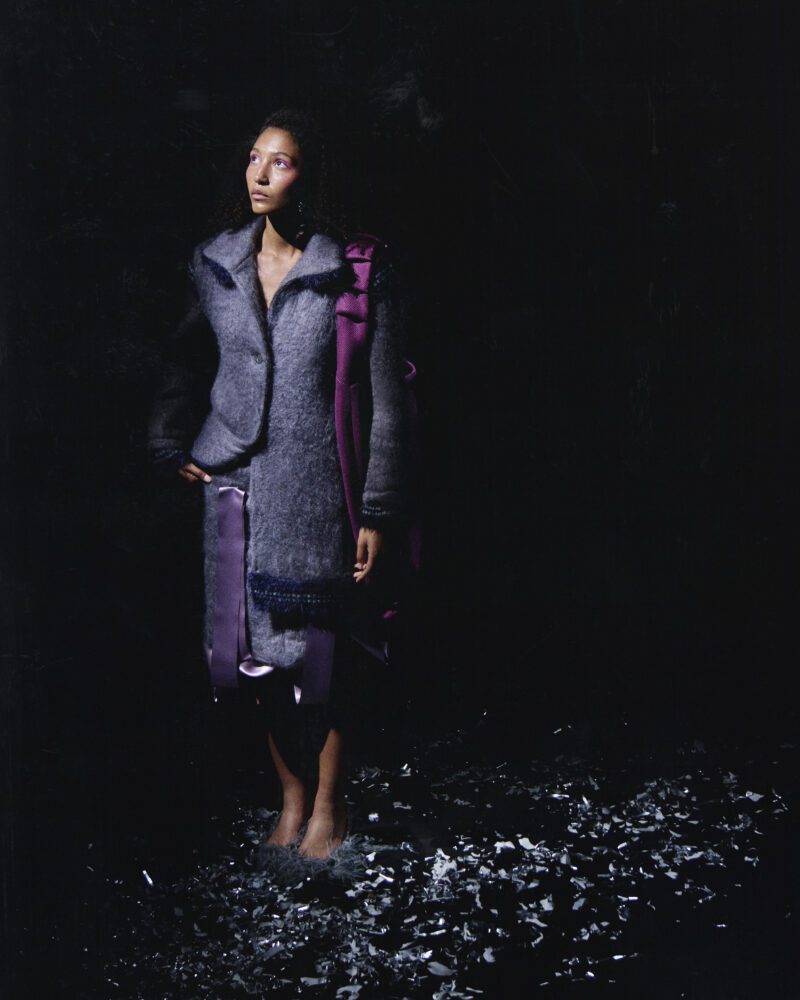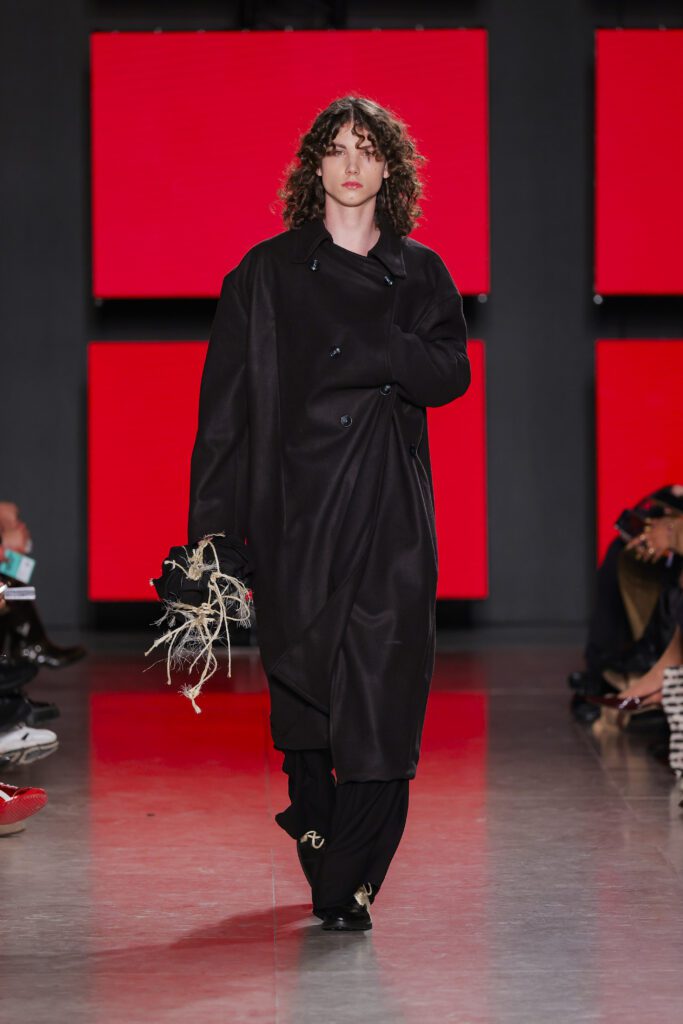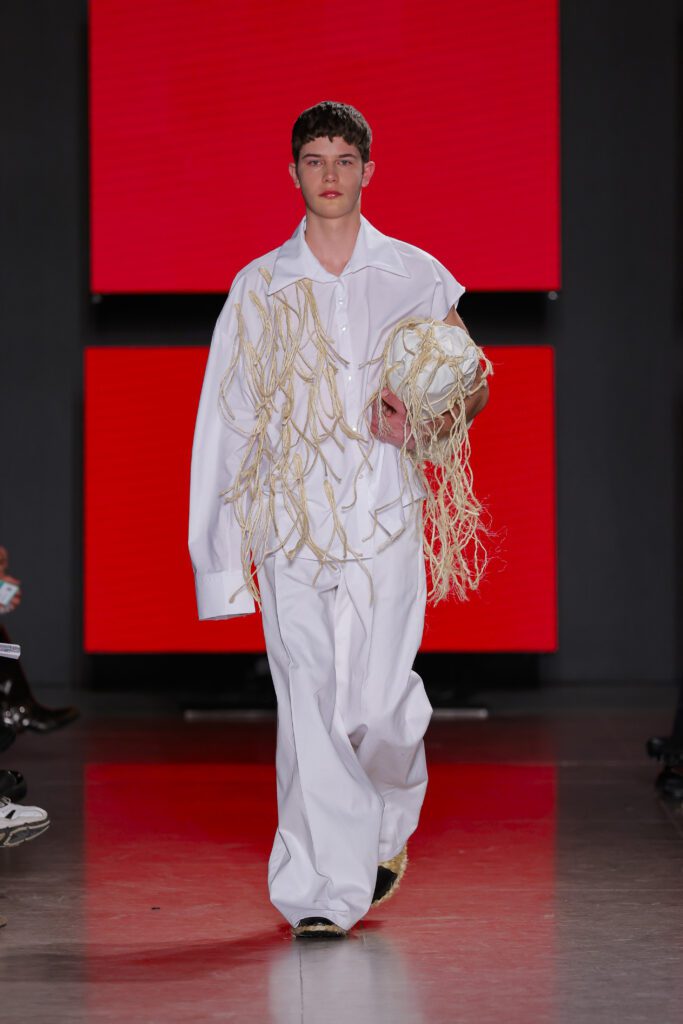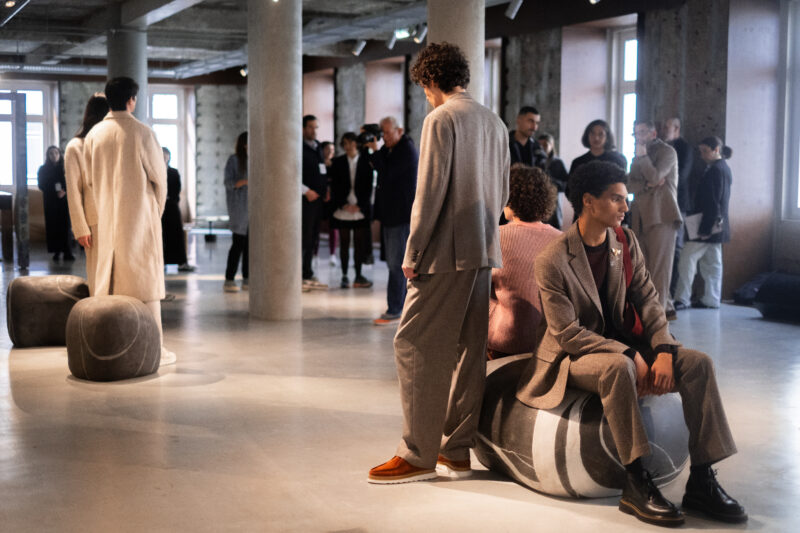Designers, partners and patrons of the country’s capital confronted today’s commercial bleakness with soulful optimism.
LISBON, PORTUGAL – The Portuguese cultural scene is often acclaimed for its poignant, emotionally charged history and literary collections that have shaped brilliant thinkers and pioneers alike.
However, the fashion scene seems to have a dynamic appeal that continues to draw in a wealth of aficionados each season of Lisbon Fashion Week (Modalisboa), the event supported by the Lisbon City Council that recognises local designers as core pillars in establishing the capital as a global centre of creativity.
As a first-time attendee, I found myself captivated by something I often struggle with when attending shows at established fashion houses: a newfound sense of invention, innovation, and newness—combined with a deep understanding of craftsmanship and technical expertise (more on that later).

Constança Entrudo

Constança Entrudo
From lost memories to threads of heritage and belonging, designers like Constança Entrudo, who showcased a collection at the famed Gulbenkian that wove a playful parody, stood out as key figures this season. She played on tradition and tongue-in-cheek existentialism, leaning on society’s obsessions with winners and losers, celebrating the often-overlooked second place.
Through her presentation—displayed in a dark room on the museum’s ground floor—Entrudo explores the demoralising underside of meritocracy while materialising the textures of effort, process, and acceptance, embracing the quiet beauty of silver linings.

Sangue Novo

Sangue Novo
A key highlight of this season’s programme was the second phase of Sangue Novo, supported by Seaside, which continued promoting young talent with Work Station. Inês Barreto, one of the contest winners in 2023, has completed her Master’s in Fashion Design at IED Milano and is now joining Mestre Studio and Bárbara Atanásio, as well as the academy’s Graduate Fashion Show.
Under the theme Nostalgia for the Future, the academy brings to Lisbon a selection of six collections from its campuses in Italy and Spain, reflecting on the nostalgia of moments that exist only in the imagination. Sala do Risco’s runway also became the stage for the most famous names in Portuguese design, with the return of Alves/Gonçalves alongside Carlos Gil, Luís Onofre, and Kolovrat, among others.

Luis Onofre backstage. Photograph: Melissa Vieira

Luis Onofre backstage. Photograph: Melissa Vieira
Which brings us to the question: to dare or not to dare? Indeed, it’s another puzzle—well answered—by APICCAPS: the Portuguese footwear, components, leather goods manufacturers’ association founded in 1975 and representing the footwear industry. The organisation also relies on the participation, as contributing members, of companies whose area of activity is related to the sectors that it represents.
“The big investment we are making, the biggest ever made by our industry until the end of the decade, is 600 million euros in four different but complementary areas,” says Paulo Gonçalves, spokesperson for APICCAPS.
“We are not particularly focused on increasing production, as the sector already manufactures 80 million pairs of shoes a year; our main goal is to optimise processes and make the Portuguese footwear industry an international benchmark in the development of new products.” This 600-million-euro investment planned by the end of 2030 includes two major projects already underway (BioShoes4All and FAIST), which are expected to be completed by the end of this year, in the areas of automation, digitalisation, and sustainability.
One of the main axes of this strategy is the green commitment, according to the company, the association that signed a protocol with around 150 companies earlier this year, which involves audits to improve energy efficiency, material use or eco-design.
“We’re carrying out these audits so that we can effectively change and optimise processes. The next step is the development of a new generation of products,” opined Gonçalves, who said that 100 partners, including 14 universities, are working with the Portuguese footwear industry to put it at the forefront.

Portuguese Soul presentation. Photograph: Tomás Monteiro

Portuguese Soul presentation. Photograph: Tomás Monteiro
The sector is working on areas such as energy efficiency, water consumption reduction, or even eco-design. “24 million pairs of shoes are produced every year and about 90% are made in Asia, which means that nine out of ten people wear Asian shoes. We do not think this is sustainable, on the contrary, we think there is a place in the market for a small player like Portugal,” he says.

Portuguese Soul presentation. Photograph: Tomás Monteiro
There are currently 1500 companies in the footwear cluster (footwear, components and leather goods), responsible for 40 thousand jobs. The sector exports 90% of its production to 173 countries on all five continents. “Regardless of economic cycles, we are here to stay. The greatest proof of our confidence is that we are making the biggest investment in our history. We know that Portugal can be a great international benchmark in terms of developing a sustainable industry, an industry for the future,” he concluded.
by Chidozie Obasi
